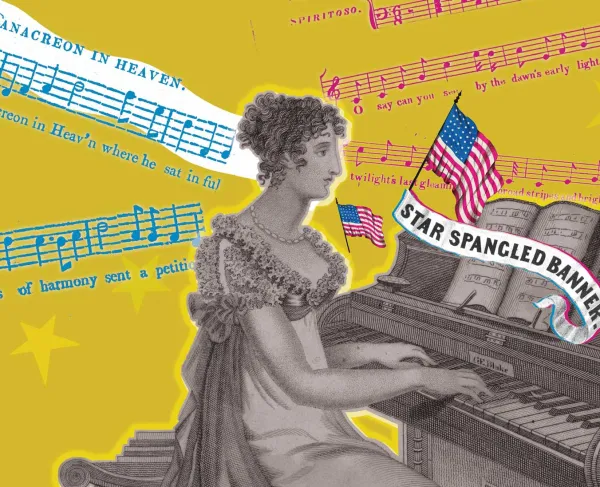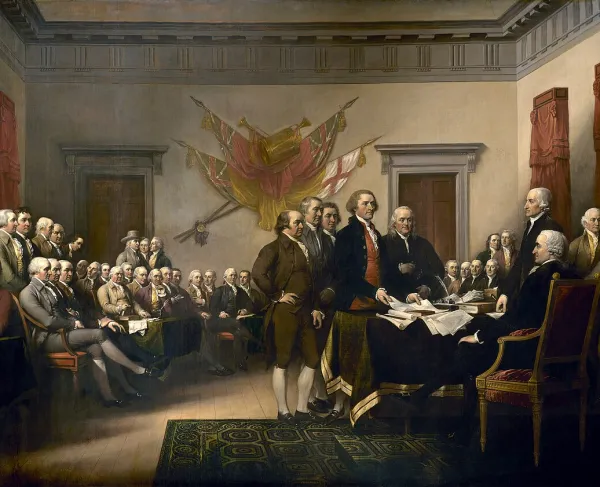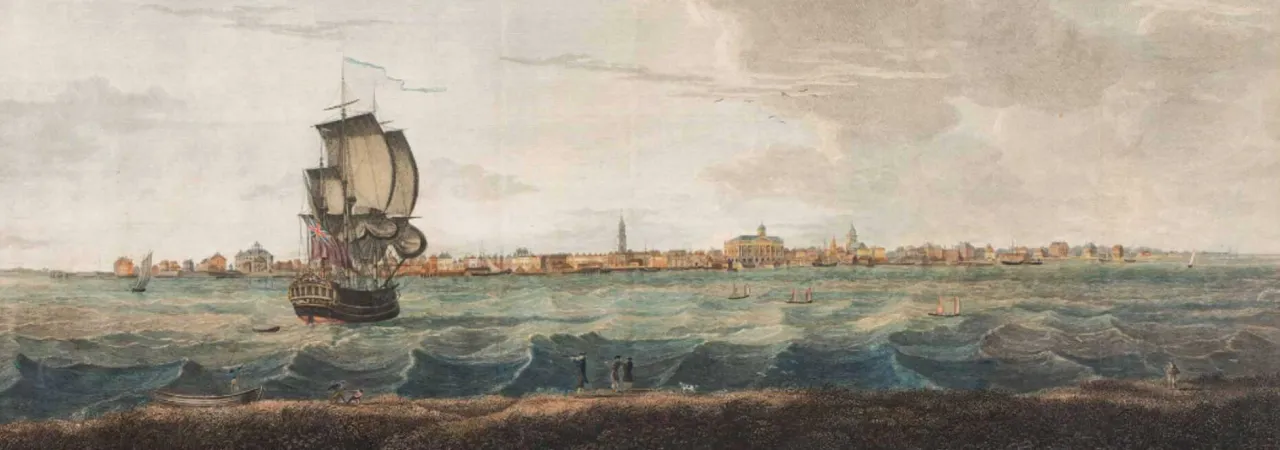
A view of Charles-Town, the capital of South Carolina / painted by Thos. Leitch ; engraved by Saml. Smith.
Replace the sounds of car traffic with the trots of horse carriages and rolling wagons on unpaved roads, you’ll begin to transform yourself back to how people lived every day during colonial times. Livestock might be shepherded through the main streets to the local market while enslaved Africans could be auctioned off in public gatherings. Anglican ministers, representing one of the largest religious dominions in the South, would have been treated as trusted guides and looked upon for advice by the community. Citizens were proudly British subjects, even long after events would begin pushing many to question their allegiances to the British monarchy.
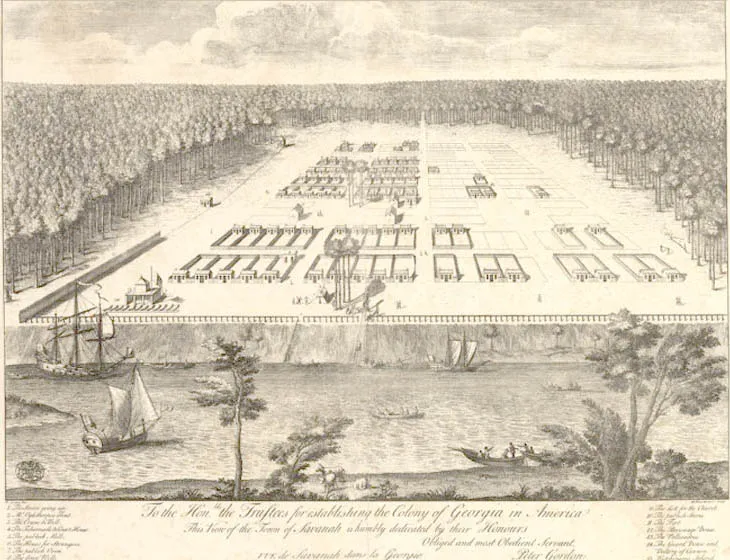
As many Americans today have come to know, the laid-back atmosphere in the southern states is a way of life. It has its roots in the colonial era and how people naturally reacted to influences of British culture and the sub-tropical climate. Mosquito-born disease was far more likely to take lives in the southern colonies than in the north, which partially explains why the life expectancy of citizens was lower than in other regions of the continent. It also partially explains why the slave trade continued unabashed: enslaved people fell victim to the climate as they were literally worked to death, making the need for more laborers inevitable. British cultural influences also played a major role in this mindset. Wealthier citizens viewed themselves as the American version of the British aristocracy, mimicking them in fashion tastes, architectural design and cultural habits. It helps explain why those privileged enough to attend school and university to study law also became familiar with subjects in science and philosophy. The idea of self-improvement was an Enlightenment concept, but the agrarian lifestyle, mirrored in many ways elsewhere in the colonies, would become the staple of southern identity. Couple these ideas with how the planter class saw themselves, these early versions of leisure trickled down and became the benchmarks of what many in society viewed prosperity to mean.
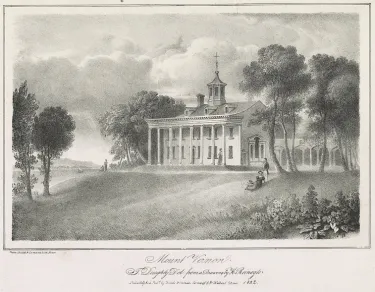
Houses were typically made of brick and wood, a trend that followed in the footsteps of those that had redefined the streets of English towns in Britain throughout the eighteenth century. In the South, the larger homes of the wealthy planter class usually had elegant main halls that served as breezeways between the main and rear entrances. This proved to be vital in an era that did not have air conditioning; another staple would be the cupola on rooftops that allowed rising heat to escape (Mount Vernon). For most regular citizens, a fireplace and hearth would have been one of the few shared expenditures with the elite. Used for cooking and providing comfort in the winter months, they were necessities in every household.
Like other colonies, courthouses played a unique role in local communities. If a town had a courthouse, it would have been looked upon as a district of importance, no matter its size. Courthouses built of brick and in the Georgian style were common sites throughout the South, and these served as more than just places to conduct judiciary business. They were visible symbols of law and order, but also of prosperity and in the belief of English rights. They were places of gathering; for meeting friends and for debating ideas. Aside from churches, congregating in the midst of the local courthouse showed domestic tranquility and progress, and established an air of stability. Government structures differed in each colony, though all retained elected assemblies that served under a royal governor appointed in London. Many of these governments served as bodies that deliberated on the expansion and claim of western lands leased or owned by the coastal colonies. Conflict among Native Americans was common, particularly in Georgia and Virginia, the latter whose land claims extended deep into present-day Ohio and Tennessee.
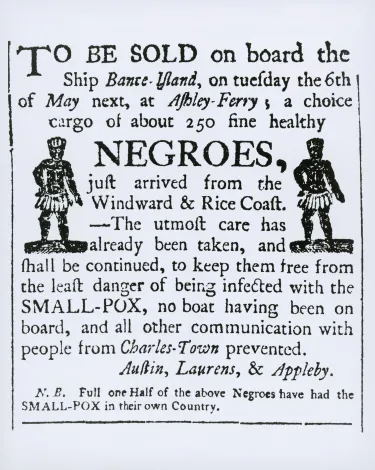
As was true for colonies in New England and the mid-Atlantic, trade was the primary economic stimulus for the individual colonies in the South. Charles Town, South Carolina was the largest port south of Philadelphia and became the gateway for all goods into the southern colonies. Savannah, Georgia, and Baltimore, Maryland were also key ports that provided access to the merchant economy. What largely defined the economy of the southern colonies was cultivating and producing tobacco, wheat, rice, and sugarcane further south in South Carolina and Georgia. These crops were harvested and farmed on plantations owned by planters who used overseers and workmen to manage the manual labor performed by enslaved Africans and born Americans. The life of an enslaved person, particularly one sentenced to working laborer positions in the elements, could be especially brutal. Most enslaved people worked the fields from dawn until dusk with one stop for lunch each day. Sundays were reserved for worship if Christian. Others who served as cooks, maids, seamstresses, body servants, and house servants could be afforded better conditions, leading to some animosity among the laboring groups. Children who were too young to work were often given small tasks around the plantation; others were chosen to be personal servants to the white children of the planters. In some places, such as the Chesapeake, free communities of African Americans existed. Some black farmers owned slaves themselves, adding to our modern-day confusion over the role slavery played in the eighteenth-century economy. Segregation among enslaved Africans and free white citizens was more common in northern colonies. It was common practice for southern planters to use their people as messengers and to run errands. Many were well-known throughout local communities, which made it incredibly difficult for them to disguise themselves or try to escape to freedom. In places like Virginia, free populations were visible too, adding to the tension of keeping enslaved blacks complacent with their status as property while witnessing free blacks walking in town. This threat would prove one of several reasons for states like Virginia to push free populations out in the early nineteenth century.
What pushed many of these leading figures and supporters towards revolution largely was a mixture of religious autonomy; belief in English natural rights and liberty, and in the case of the planter class, a wariness of the rising amounts of debt individuals were taking on with British creditors. The latter is perhaps what separates motives between northern and southern colonists during the years leading up to the American Revolution. In the South, the main economy was structured around the tobacco trade. Between frequent droughts, market instability, and depletion of fertile soil, Virginia, in particular, faced economic uncertainty in the 1760s. To make matters worse, many of the planter class became accustomed to living on credit with foreign banks and creditors. While they borrowed handsomely to enrich their estates with the newest European furnishings, they expected to export tobacco at a price that would bring them high returns. Instead, the price of and demand for tobacco plummeted in the 1760s as Britain faced a recession because of the financial ruin its credit was in from years of over-extension and mismanagement. Couple these events with creditors who began calling in their loans to the Southern gentry class at the same time Parliament issued the Sugar and Stamp Acts, and one can see how the sudden demand for hard money (many wealthy planters did not have much in hard money — land ownership provided their wealth) that would trigger a reaction like it did. This is not to suggest that economic reasons were the primary motives for Southern radicals and residents to protest British taxation; plenty of argument and defense of liberty and freedom were equally afoot in petitions and grievances. But unlike the merchant class of Boston and New England, new British taxation threatened to squeeze Southern interests and the economy further than it wanted. Unable and unwilling to denounce slavery, despite many complaining of its economic burden, the Southern economy forged ahead while elected officials attached themselves to protest movements in the northern colonies, no doubt to show solidarity for liberty, even if their motives were slightly different for doing so.
Further Reading
- Tobacco Culture: The Mentality of the Great Tidewater Planters on the Eve of Revolution By: T.H. Breen
- Major Problems in the Era of the American Revolution, 1760-1791 By: Richard D. Brown
- The Transformation of Virginia, 1740-1790 By: Rhys Isaac
- Revolutionary America, 1750-1815: Sources and Interpretation by Cynthia A. Kierner
- Major Problems in American Colonial History By: Karen Ordahl Kupperman
- Liberty and Authority: Early American Political Ideology, 1689-1763 By: Lawrence H. Leder
- The Social Structure of Revolutionary America By: Jackson Turner Main
- The World They Made Together: Black and White Values in Eighteenth-Century Virginia By: Mechal Sobel

